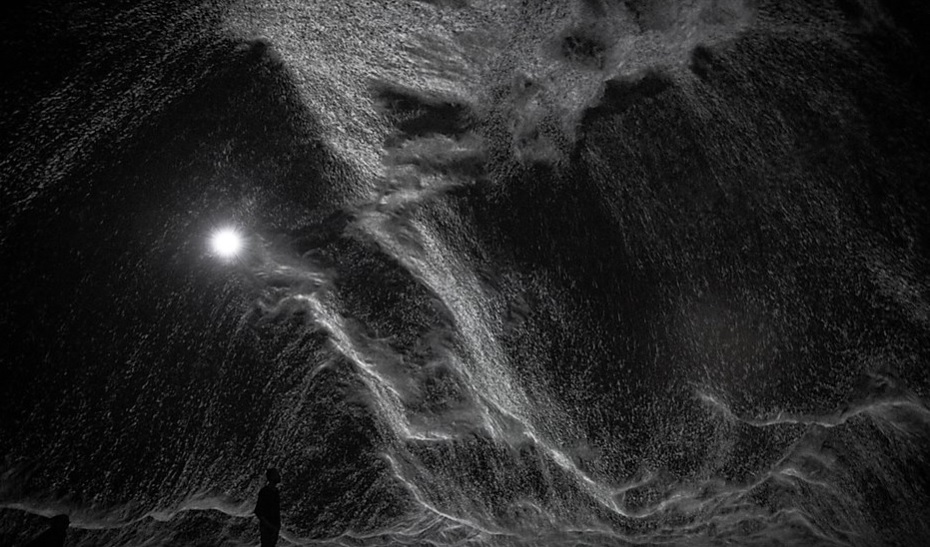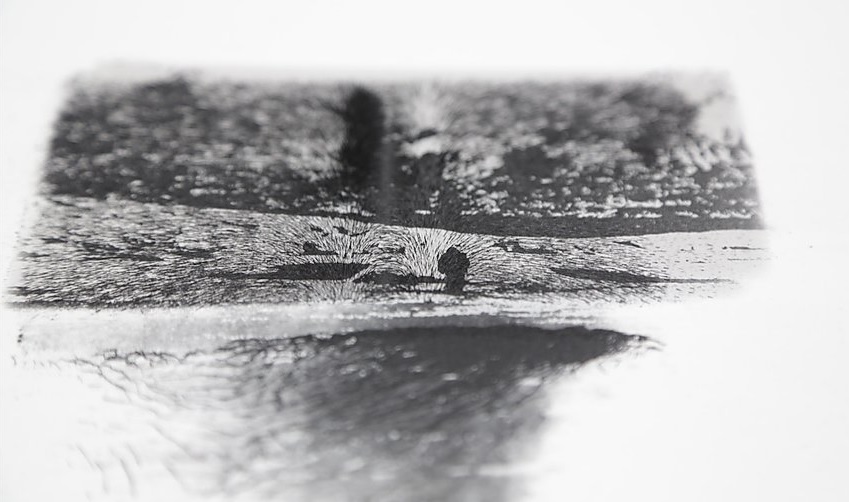藝評
Carla Chan’s Black and White
楊陽 (Yang YEUNG)
at 4:30pm on 23rd March 2020



Captions:
1. Carla Chan, Black Moves, 2015
2. Carla Chan, Black Falling, 2017
3.-4. Carla Chan, To the end for the beginning, the heaviness of my heart, 2020
5. Carla Chan, Between Happening, 2017
Photos courtesy of the artist
(原文以英文發表,評論卡娜的作品。)
“Attention without feeling, I began to learn, is only a report. An openness — an empathy — was necessary if the attention was to matter.” – Mary Oliver (cited in brainpickings.org)
In Carla Chan’s practice, “black” and “white” are states of being – encountering, becoming, and depending upon each other. As digital strokes, staged moving images, and physical things, they pull the viewers’ full presence into their rhythm, their existence.
In “Black Moves” (2015), for instance, a video shows a nameless mass rising and subsiding. It has no beginning or end. It is at once quicksand, a towering wave, and molten rock that are acted upon by forces coming from multiple directions. A dot of light occasionally flickers from behind it. In another work – multi-channel video installation “Melting Black” (2016), the artist presents close-up moving images of tidal waves in a sideway perspective, tilting the habitual reception of the horizon. While in “Black Moves”, the artist works with digital objects, and in “Melting Black”, video footage, they both testify to the artist’s intense curiosity in “black” and “white” as close-at-hand while also infinitely vast. The artist’s interest in the motion (be it by the force of nature or humanly devised) of “black” and “white” manifests in the minute as well. In “Black Falling” (2017), she first sprinkles iron powder onto paper lying flat. She then picks up the paper vertically so that the powder slides down randomly. A cascade is enabled by a combination of gestures: darkening, sweeping, falling, dropping, settling… In her words, it is an “experiment in the translation of movement into traces.”
It is against this background that the current solo “To the end for the beginning, the heaviness of my heart” is set, and bounces off. Continuing with her interest while also responding to the times – the political circumstances in Hong Kong where “black” and “white” at times become cliched and iconic symbols for darkness and light, injustices and hope, Chan disturbs their representational structure. In place of the yearning for socially- and politically-charged meanings, she focuses on the material reality of her work: she brings the analogue back to the aesthetic constitution of the digital. For instance, “Between Erasing” (2019), a new iteration of “Between Happening” (2017), is a kinetic sculpture. Iron powder is driven by a magnetic mechanism to glide on a piece of paper. It is also a painting by mechanical means. This repetitive gesture of blackening and erasing shows how contingent the established definitions of such art forms as drawing, moving images, time-based work, to name a few, could be. For the artist, the motivation in showing the work relates more to the current political movement in Hong Kong. Carla Chan told me of her dilemma in a recent interview, “I struggled if I should make work in response to the movement or not, but I know I want to. When you are immersed in a long kinetic work, can you reach a moment of reflection or extension?”
In “Between Erasing”, Carla Chan chooses a visual language that keeps a distance from frequently circulated images of the movement, that could be easily consumed. For her, the work is primarily a reflection on how human actions leave irreversible traces. Subdued responses to political contentions are not easy to come by, especially when Carla Chan has been following the events dearly from afar, in Berlin where she is based. But what I find to come out even strong in the current solo is the work’s ability to compel our attention to the tension between monotony (of the mechanism) and the endless, almost magical transformation of the way black, white and gray inhabit and affect each other (of the moving iron powder). It is persistent self-training in lending close and imaginative attention to such small movements as in smoke and falling snow that enables the artist to carve out a wider and more nuanced spectrum between “black” and “white”, so that neither has a stable, culturally and politically fixed referent.
Gestures of repeated destruction and construction are the overall baseline of the solo, only now, Carla Chan’s narrative devices – long, time-based, movements – are dotted with spatial interventions, arising out of found images of the political movement, to form broken trajectories. It turns out the most miniscule could stand out to be the strongest and most solid and the gigantic could be liquified and soft-edged.
I am not sure if nocturnal is the right word for the touch of the show, but I use the word not with the intention to substitute “black” with it. In playing, and playing well with “black”, the artist evokes the nocturnal as is a way of relating to the world. David Michael Levin once puts this the most beautiful words:
“There is a wisdom in our experience with the night that we desperately need to learn: an experience with absence, with fusion and indistinctness, with ambiguity, shifting boundaries, elusive and transitory presences, insubstantial apparitions, concealments, a sense of wholeness and integration, encounters with the night which disturb our settled sense of reality and penetrate our culturally established ego-logical defences.” [1]
The night, for Levin, “is vision moved by the invisible, born of the invisible.” [2] Is the invisible knowable? Carla Chan shows how, where “every intervention leaves its traces,” [3] what matters is less what is known now, but what could be perceived for a certain uncertain future>
Notes:
[1] Levin, David Michael. The Opening of Vision: Nihilism and the Postmodern Situation. New York: Routledge. 1988: 351-2.
[2] ibid., p. 354
[3] from the artist statement for “Between Erasing” (2019)
First published in The 25th IFVA 2019/2020 (pp. 82-3), Hong Kong Arts Centre: Hong Kong.
